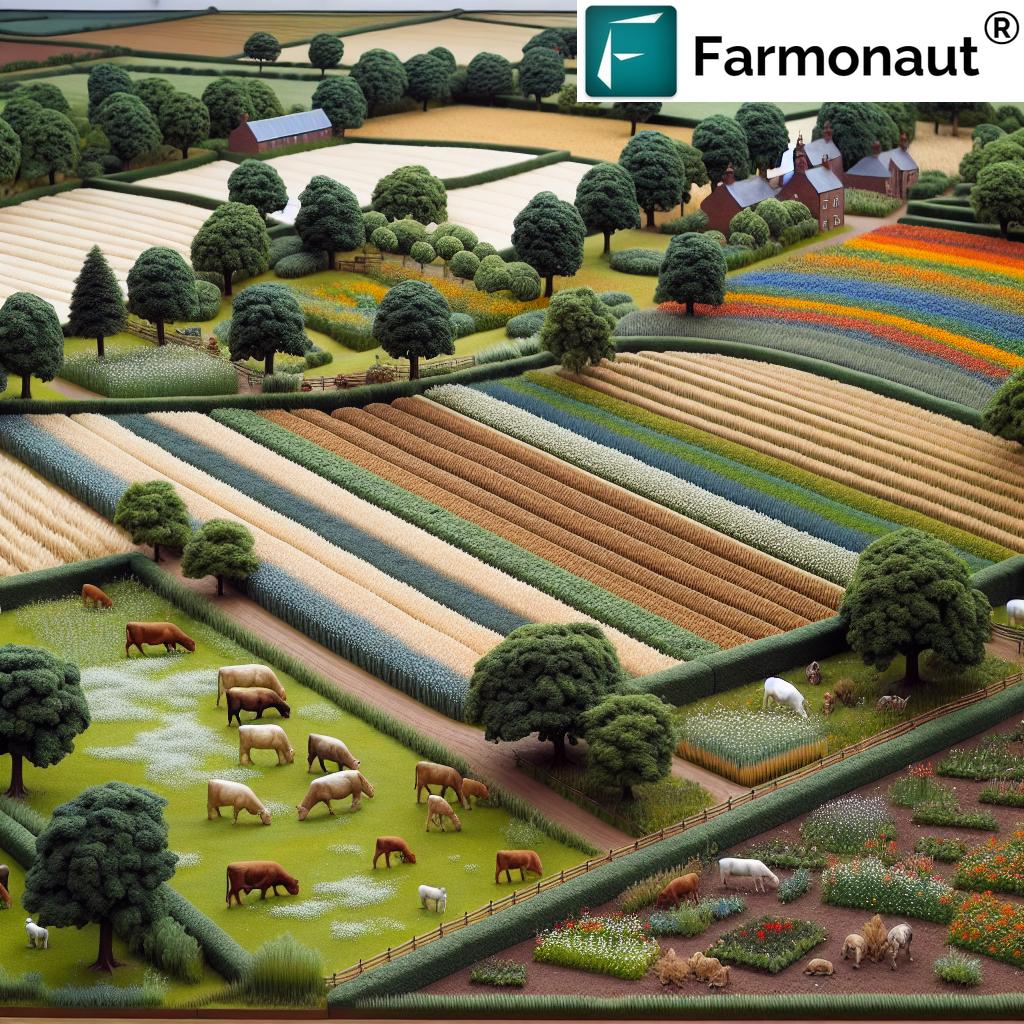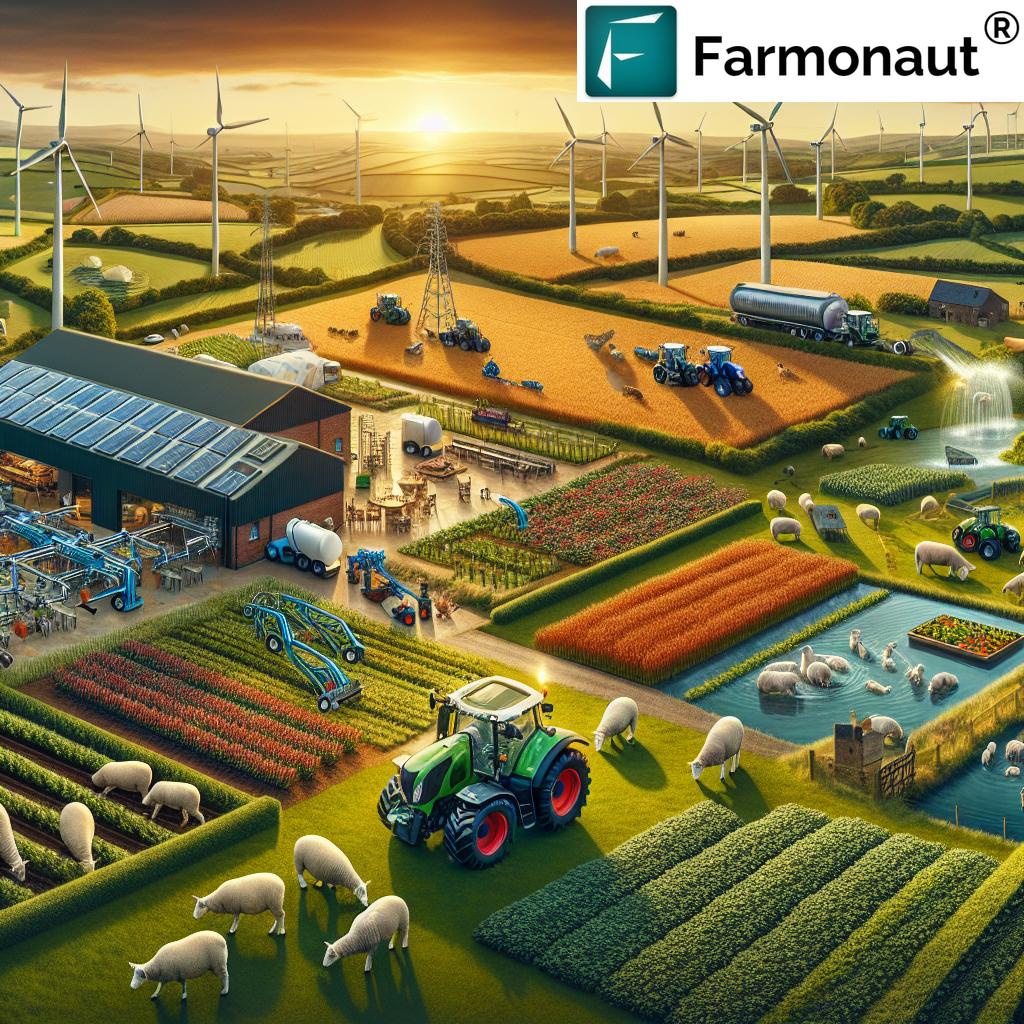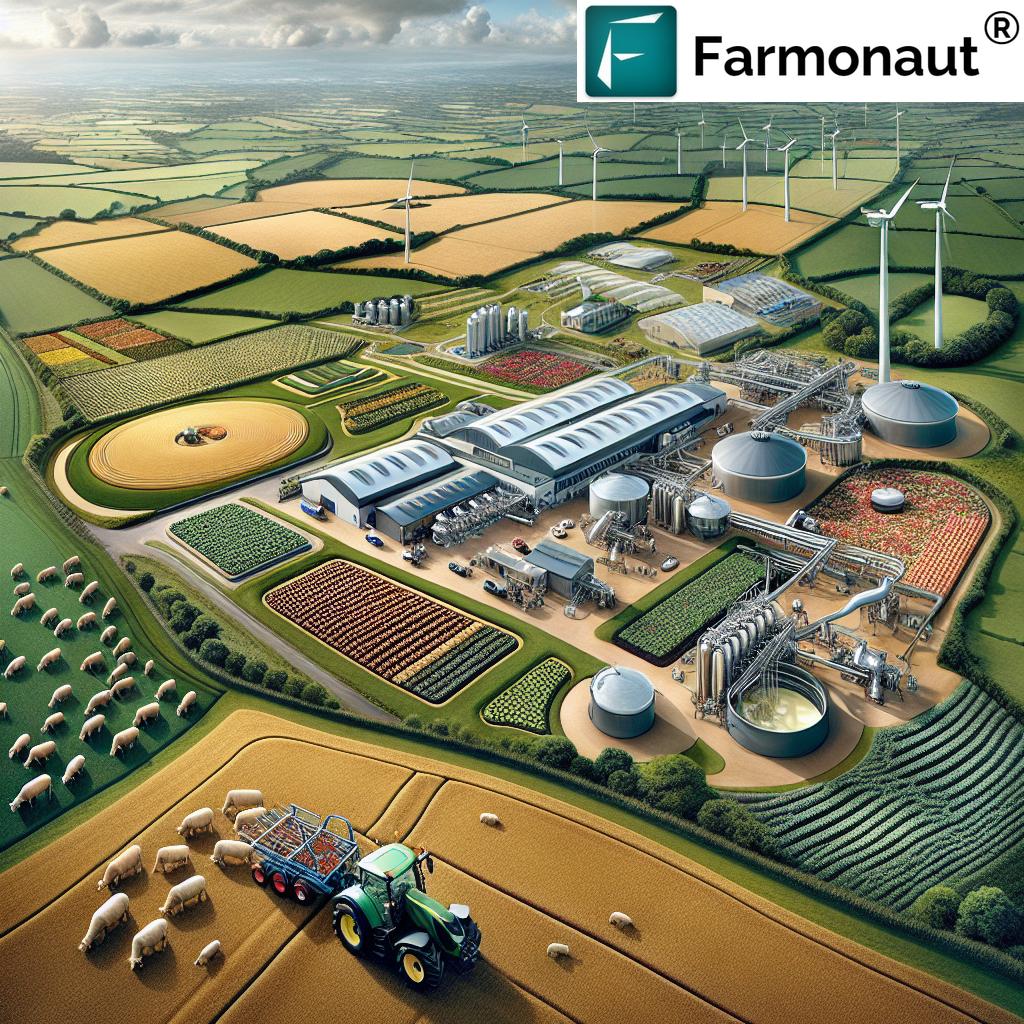Carbon Credit API & Best Credits for UK Farmers: 2025 Guide
Introduction: Why Carbon Credit APIs Matter in 2025
Carbon credit API and the best carbon credits for farmers UK are at the heart of a revolution in sustainable agriculture in 2025. As the planet faces critical climate change milestones, the pressure on agriculture—one of the largest sectors affecting both greenhouse gas emissions and carbon sequestration—has never been greater. In response, a surge of innovative solutions and APIs are helping farmers transform environmental stewardship into reliable revenue streams, leveraging data, satellite technologies, and evolving market mechanisms.
This comprehensive 2025 guide explores how UK farmers can harness carbon credit APIs, choose the best credits, and implement sustainable practices to mitigate climate impacts, boost income, and support holistic land management.
“UK farmers could earn up to 3 extra revenue streams by adopting carbon credit APIs in sustainable farming by 2025.”
What is a Carbon Credit API? Bridging Technology & Sustainability
A carbon credit API (Application Programming Interface) is a technological tool that allows direct, real-time access to verified data on carbon credits—enabling farmers, landowners, companies, and traders to seamlessly buy, sell, and track credits digitally via standardized, transparent platforms.
By 2025, these APIs are the critical bridge between on-the-ground sustainable farming practices—like soil carbon improvement, agroforestry, no-till, cover cropping, and methane reduction—and the dynamic carbon markets. APIs help democratize market participation, providing farmers across the UK and beyond with streamlined processes for monetizing environmentally beneficial activities without burdensome paperwork or prohibitive administrative barriers.
How Carbon Credit APIs Work in Agriculture
- Standardization: APIs create transparent, standardized controls for verifying carbon offset projects, using recognized international standards (e.g., Gold Standard, Verra, Woodland Carbon Code).
- Automation: By integrating with remote sensing (like satellite imagery), IoT sensors, and field-level data, APIs automate measurement and reporting for carbon sequestration—in real-time.
- Market Access: APIs facilitate access to both public and private carbon markets, allowing farmers to generate, list, and sell credits digitally with minimal friction.
- Verification: APIs enhance transparency by automatically linking on-farm actions and outcomes (crop, soil, reforestation) to verifiable carbon benefit data using advanced blockchain verification (but not necessarily using cryptocurrencies).
Ultimately, a carbon credit API transforms the relationship between sustainable farming practices and financial incentives—empowering farmers to reliably benefit from their environmental stewardship.
Further reading: Access the Farmonaut Carbon Credit API or dive into technical specifics in our API Developer Docs.
Innovations in Carbon Credit APIs: The 2025 Landscape
The pace of innovation in carbon credit API technology is accelerating. In 2025, APIs are no longer just about digital trade—they’re intricately woven into the fabric of on-farm data management, satellite analytics, and AI-driven verification of carbon sequestration projects.
- Satellite Imagery: Platforms like Farmonaut integrate high-resolution, multispectral imagery with APIs to measure vegetation health (NDVI), track reforestation, and verify soil carbon changes over time.
- AI & Machine Learning: APIs process enormous datasets, automatically flagging opportunities for methane reduction, changes in soil organic carbon, and enhanced results in cover cropping and livestock management.
- IoT Integration: Live data from in-field sensors measure carbon flux, soil moisture, or livestock emissions, feeding farm dashboards or reporting systems with actionable information for APIs to calculate credits.
- Blockchain Traceability: Platforms harness blockchain (read about traceability here) to guarantee transactional integrity—each ton of carbon sequestered or reduced can be traced, giving buyers and the public confidence in the underlying environmental benefits.
These technologies are positioning APIs at the center of the fight against climate change by linking every verifiable, measurable improvement in farm sustainability directly to the financial markets willing to pay for those benefits.
Best Carbon Credits for UK Farmers: What to Choose in 2025?
The UK is at the forefront of carbon credit initiatives, with both government and private entities supporting farmers to adopt more sustainable practices that reduce emissions, enhance soil health, and sequester more carbon in landscapes.
Best carbon credits for farmers UK go beyond mere carbon storage—they incentivize holistic environmental benefits like improved biodiversity, water retention, and farm resilience.
Top Carbon Credit Options Available to UK Farmers in 2025
- Woodland Carbon Code
The most widely trusted UK government-accredited program for generating forest-based carbon credits. Offers verified credits from new woodland creation and is often favored in voluntary and compliance markets for its strict protocols and ecosystem co-benefits.
Explore Farmonaut’s Forest Advisory Tech for managing planting, forest health, and performance via satellite and AI for simplified Woodland Carbon Code projects. - Peatland Code
Rewards the rewetting and restoration of peatlands, which are crucial for carbon sequestration but highly vulnerable if degraded. Peatland Code credits are valuable, with the double benefit of restoring habitats and reducing emissions from drained peat soils. - Soil Carbon Projects
Facilitate carbon credit generation through measurable improvements in soil organic carbon—often using remote sensing, digital tracking, and API-based verification. These are emerging rapidly as the science and monitoring tech becomes robust enough for credible issuance.
- Regenerative Agriculture Carbon Schemes
Support a suite of practices (cover cropping, no-till, rotational grazing) and are increasingly linked to both biodiversity and water improvements in the UK. - Private Aggregated Market Platforms
Leverage data from multiple farms, pooling projects for higher value and more efficient market access—often using sophisticated APIs and satellite data for reporting.
Selecting the best carbon credits for farmers UK depends on land type (woodland, peatland, arable), the ability to measure outcomes, available data, and application simplicity.
Top Carbon Credits for UK Farmers: 2025 at a Glance
| Carbon Credit Name | Provider/API | Est. Credit Value/Tonne (GBP) | Eligibility Criteria (UK Focus) | Verification Standard | Application Simplicity | Est. Income Potential/Hectare (GBP) | Sustainability Impact (GHG Reduction/Hectare) |
|---|---|---|---|---|---|---|---|
| Woodland Carbon Code | UK Gov. API: Woodland Carbon Code Registry |
£25–£45 | New woodland creation, meets species/native mix, min. area | Woodland Carbon Code | Medium | £200–£500 | 8–20 tCO₂e |
| Peatland Code | IUCN UK API: Peatland Code Registry |
£22–£55 | Eligible degraded/re-wettable peatlands, project plan | Peatland Code (IUCN) | Medium/Hard | £350–£700 | 12–30 tCO₂e |
| Soil Carbon Projects | Marketplaces (e.g., Soil Capital) API: Soil Carbon Market API |
£15–£35 | Arable, pasture; visible baseline & new practice evidence | Verra, Gold Standard, Plan Vivo | Easy/Medium | £70–£180 | 2–7 tCO₂e |
| Regenerative Agriculture Aggregators | Private (e.g., Agreena, Nori) API: Proprietary |
£20–£40 | No-till, cover cropping, livestock: pooled farms | Verra/Gold Standard | Easy | £110–£300 | 3–10 tCO₂e |
| Farmonaut Carbon Tracking & API | Farmonaut API Platform Link |
Custom, project-based | Projects with satellite-verifiable improvements | Blockchain, Gold Standard (integrated) | Easy | Varies: £70–£500 | 2–30 tCO₂e (project-based) |
Note: Income and GHG reduction estimates are illustrative and vary by land, practices, baseline, and market rates.
Farm Credit of New Mexico: Learning from Global Finance Models
While not directly applicable in the UK, Farm Credit of NM (New Mexico) highlights an exciting concept: how agricultural finance institutions are shifting to reward sustainable practices and carbon projects. In 2025, these institutions are:
- Offering green loans: Lower interest rates, longer terms, and better access for those investing in carbon reduction, renewables, or soil carbon improvement.
- Aligning finance with sustainability: Linking loan eligibility/enhanced terms to adoption of certified, verified carbon initiatives (e.g., reforestation, cover cropping, methane reduction in livestock).
- Supporting income diversification: Ensuring farmers can access both upfront funding for new practices and additional income from carbon credits as projects deliver environmental benefits.
This model is influencing UK lenders and policymakers to make carbon-friendly credit mainstream, amplifying the incentives for sustainable change and market participation.
Farmonaut & Satellite Technology: Streamlining Farm Data for Carbon Credits
As sensors, satellite data, and APIs converge in 2025, platforms like Farmonaut are helping farmers and industry participants reduce their own administrative burdens, improve accuracy, and increase financial returns from carbon markets.
- Satellite-based Monitoring: Real-time, frequent monitoring of soil health, vegetation, reforestation, and cover cropping—delivering evidence directly into carbon project reporting and credit verification workflows.
- AI-based Advisory: Custom, actionable insights for land management, climate resilience, and GHG reduction—using platforms such as Farmonaut’s Jeevn AI.
- Blockchain-based Traceability: Trusted, verifiable tracking of carbon outcomes linked to marketplace APIs for buyer/seller transparency (read more at our product traceability page).
For those interested in maximizing the potential of smart, data-driven carbon credits in 2025, check out our detailed Carbon Footprinting Toolkit.
Farmonaut’s Carbon-Focused Solutions
We at Farmonaut offer affordable, subscription-based farm monitoring through the latest in satellite, AI, and blockchain, putting the power of APIs directly into your hands—whether you’re managing a family woodland, an estate, or a large holding.
-
Fleet & Resource Management: Optimize field logistics and reduce emissions with real-time satellite and IoT integration.
Read more about Fleet Management Solutions -
Loan and Insurance Satellite Verification:
Streamline access to climate-aligned loans and reduce application time with verifiable field data and project performance.
Explore Crop Loan and Insurance Verification -
Large-Scale Farm Management: Harness satellite dashboards, AI-advisory, and compliance tools for all your land parcels—making reporting, compliance, and credit tracking a breeze.
Check the Agro-Admin App
Find out how satellite-powered agriculture is transforming carbon credit verification in the video below:
“Sustainable practices may cut UK farm emissions by 20% while generating certified carbon credits under 2025 climate policies.”
Key Challenges & Solutions for UK Carbon Credit Adoption
Despite the maturity of the carbon credit sector in 2025, UK farmers still face hurdles when integrating sustainable practices and APIs into business-as-usual operations:
- Complex Verification: Navigating requirements across different codes (Woodland, Peatland, soil) can be daunting without technical support or API-based platforms like Farmonaut’s.
- Market Volatility: Carbon credit market prices fluctuate, with long-term contracts sometimes necessary for viability.
- Data Confidence: Some landowners worry about measurement errors or the transparency of API-integrated systems—making trusted providers and partners essential.
Solutions in 2025 center around robust API verification, clear standards, and the integration of trusted satellite technology. Farmonaut and similar platforms lower the entry barrier for farmers, automate much of the data handling, and improve confidence in auditability and returns.
Getting Started: Maximizing Your Farm’s Carbon Credit Revenue in 2025
If you’re a UK farmer or landowner targeting carbon credit API-driven revenue in 2025:
- Evaluate Your Land & Practices: Assess woodland, peatland, and whether regenerative soil practices are feasible—and establish a baseline with satellite data.
- Select Suitable Credit Programs: Choose between Woodland Carbon Code, Peatland Code, or soil carbon projects based on eligibility and potential income using our comparison table.
- Integrate APIs & Data Tools: Adopt platforms (such as the Farmonaut Carbon Footprinting Toolkit) to streamline data tracking and simplify application and reporting.
- Monitor, Report & Monetize: Use satellite-verified records and smart APIs to regularly monitor outcomes and list verified credits on relevant markets.
- Explore Additional Services: Access financing and insurance through offerings such as satellite-backed crop loan and insurance verification to reduce upfront risk.
Sustainable agriculture and carbon APIs can make your farm climate smart, profitable, and resilient.
Frequently Asked Questions (FAQ)
What is a carbon credit API, and why is it important for farm revenue?
A carbon credit API is a digital bridge that connects farm data, carbon project evidence, and environmental verification directly to carbon markets. It makes the process of measuring, validating, and selling carbon credits easier, faster, and more transparent, thereby increasing potential income streams for farmers.
What are the best carbon credits for farmers UK in 2025?
The most trusted options include the Woodland Carbon Code, Peatland Code, certified Soil Carbon Projects, and private aggregators using robust API and verification technologies. Their value depends on land type, available data, and the extent of sustainable practices implemented.
How much can UK farmers earn from carbon credits?
Earnings vary but can range from £70–£700 per hectare per year, depending on credit type, verification method, and market pricing. For example, peatland restoration often yields the highest per-hectare rates, while soil carbon and woodland may offer steadier, multi-year streams.
How do satellite and API technologies ensure carbon credits are verified?
Satellite imagery provides clear, impartial records of land use changes, crop practices, and reforestation efforts, which APIs translate into standardized carbon sequestration data. Combined with blockchain traceability, this guarantees digital transactions reflect actual environmental outcomes.
Can carbon credit APIs benefit small and medium-sized farms?
Yes—APIs democratize access by lowering both entry costs and administrative efforts, making it practical for even small operations to participate in the carbon economy, especially when joining pooled projects.
Where can farmers access Farmonaut tools and carbon credit API documentation?
Farmers and agri-businesses can get started with Farmonaut via the web platform or our dedicated carbon API page. Developer support is available through our API documentation.
Conclusion: The Future of Carbon Credits, APIs, and Sustainable UK Agriculture
As the world moves deeper into decarbonization and climate resilience, carbon credit APIs, the best carbon credits for farmers UK, and advanced monitoring solutions like those provided by Farmonaut are redefining the agri-financial ecosystem.
Through seamless verification, data-driven reporting, and efficient market access, these digital solutions offer UK farmers in 2025 and beyond an unprecedented opportunity to turn their environmental stewardship into thriving, diversified revenue streams.
With platforms such as Farmonaut, equipped with the power of satellites, blockchain, and APIs, the barriers of cost, complexity, and verification are rapidly falling. It has never been easier—or more critical—for landowners to adopt sustainable practices, embrace carbon credit APIs, and make their farms part of the climate solution.
Get started with next-generation carbon credit solutions by exploring our carbon footprint monitoring tools and API platform today to unlock your land’s full climate and income potential.













